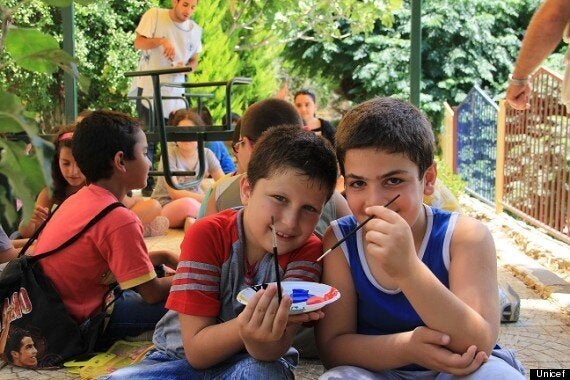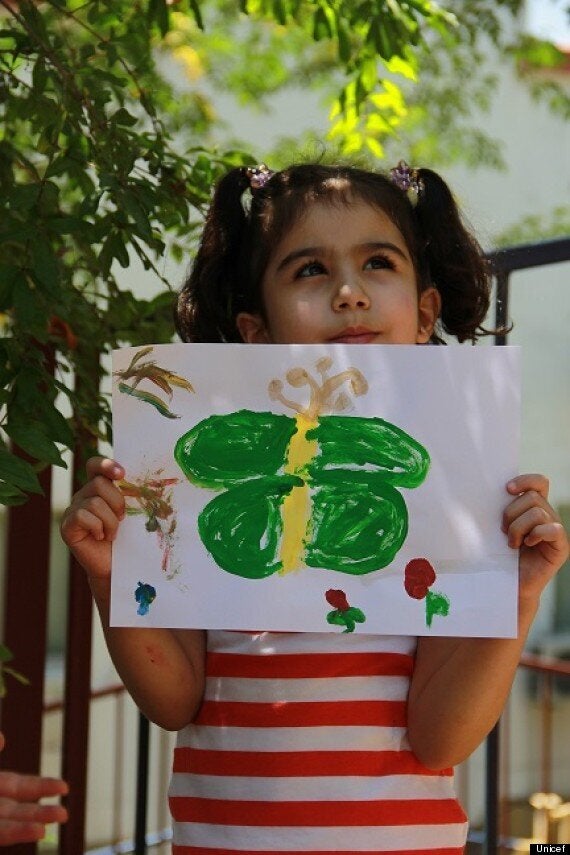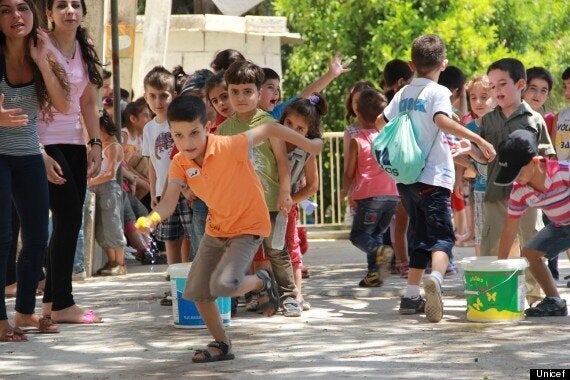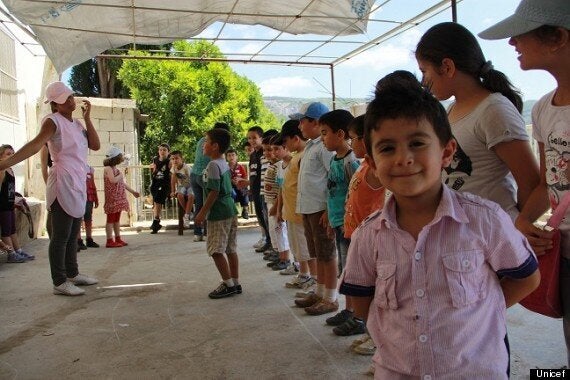In a peaceful mountain area of rural Tartous, western Syria, the fighting and destruction affecting other parts of the country seems very far away.
Some 6.8million people, or a third of Syria's total population, are affected by the on-going conflict, including more than three million children. A significant proportion of children and families - 4.25million people - have been displaced from their homes.
I was part of a Unicef team that visited a centre where psycho-social support is being made available to hundreds of displaced children in the area. A Unicef faith-based partner, Aniss Saade, provides children with a range of activities including art and sport, life skills-based education, and specialised social support.
The activities, which are run at the centre as well as through three mobile teams serving surrounding villages, help children come to terms with experiences related to the conflict and return them to a more normal childhood. Displaced children face many challenges including adjusting to new lives away from their old homes, communities and friends.
Unicef supports around 500 school clubs across the country which reaches around 160,000 children with education and psychosocial support. Children are also reached with psychosocial support through Child Friendly Spaces, including mobile teams, and adolescent activities.

Conflict-displaced children take enjoy art activities at a UNICEF-supported centre in rural Tartous
The centre in rural Tartous sits among olive trees and stone-tiered hillsides. The sounds of excited children playing and taking part in activities carries in the cool, fresh country air. It seems like the location itself is a balm to these children, along with the programmes they are involved in.
When I entered the centre, around 50 young children sat on the floor concentrating on a film about hand-washing practices. They eagerly competed to answer the trainer's questions about hygiene.
Over 4,000 families have sought shelter in this part of rural Tartous, having fled from insecurity in cities such as Homs, Aleppo and Hassakeh. Children told me how bad the sounds of the shelling in their hometowns had been.
Most families are renting apartments or living with family in the area, while others are looked after by the host community. A relatively small number of families live in shelters.

A girl displaced from Aleppo, shows her colourful drawing
Around 350 displaced children are being reached through the centre and mobile teams, which serve 52 villages, with the aim to include many more children in the programme.
Later during the visit, the children moved to the outside yard for art activities. Volunteers distributed small plastic palettes and white paper. Children sat in groups on the grassy ground and painted. Many of the scenes were bright and colourful, reflecting the mood of the children.
What I found striking was how mature these children have become for their age. Even a four-year old boy, who was originally from Homs, told me in detail how his relatives had moved away one by one.
I talked also to Rafi*, 12, who was waiting impatiently to hear about the status of his family's application to immigrate. Rafi's family left Hassakeh in north-east Syria for Damascus some months ago, but when their new neighbourhood witnessed violence, they again moved, this time to Tartous governorate.

Children play together during a psychosocial activity
These displaced children are receiving valuable support, but the needs around the country are huge and increasing.
After travelling back to Tartous city, I met a 12-year-old boy on the street. Bisher* had fled Aleppo city with his family six months ago due to the fierce fighting.
Thousands of people are living in 21 shelters in Tartous, where they receive access to a variety of additional humanitarian assistance. In addition, many thousands of people are living in the local host community.

Displaced children participate in a game that teaches concentration skills
Bisher told me that he had passed the fifth grade last year in Aleppo. At that time he was able to go to school, as his father drove a taxi and was able to make a living. When they became displaced, Bisher and his older brother decided to support their father. They started collecting plastic bottles for sale, having seen other children do this in Aleppo. "My friends are still in Aleppo," Bisher told me. "There, you hear all the time sounds of fighting."
Experiencing conflict and being displaced can have serious effects on children's well-being, but I was impressed with the child-focussed activities I saw in rural Tartous and also the resilience of children I met.
Bisher had big hopes for the coming year: "I wish to be able to go this year to school," he said with a big smile.